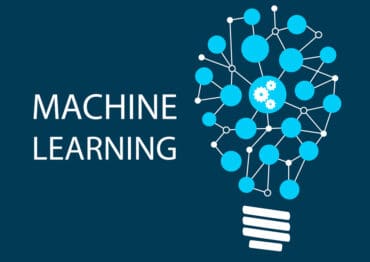
Without fail, the fastest moving and most resilient companies are laser-focused on two things: ecosystems and reducing friction.
As humans, we are prone to cognitive biases. It’s not our fault. It’s just the way we are wired. For example, in the current business climate, many companies are facing the gap between perception and reality, and the stakes are enormous–the very existence and continuation of the business itself as some business models will not survive in the post-pandemic world.
Before the last few months, their perception was that someday in the future, they would need to support remote transactions, self-service, participate in ecosystems, and focus more heavily on user experience, but these items seemed aspirational in the face of modernization and extinguishing fires.
See also: The Ultimate Guide to Enterprise Chatbots
With the current acceleration being driven by COVID (and a recession, and changing work dynamics), each company must confront the Hamming distance between their project portfolio from 12 months ago and the few key actions they now must take to adapt and thrive.
The elephant not in the room
Let’s start with the critical pivot–the elephant in the room. But, the elephant isn’t in the room, is it? It’s at home trying to transact with your systems. Whether customers or employees, partners or brokers, upstream or downstream supply chain, someone is attempting to transact remotely with your business today, and they aren’t happy.
While we have firmly entered the remote transaction era, many businesses still resist due to the simple concerns of security, visibility, and control.
We’ll tackle each of these and then look at what the companies should be thinking about.
The first mistake: The false dichotomy of open
I regularly coach executives on how to adapt their businesses to thrive. Repeatedly, I hear questions like, “Doesn’t open mean being inherently less secure?” It would be logical to assume that if open is the first choice, then closed must be the alternative. Openness gets muddled with concepts like security, and many companies shy away from it.
Here, the choice is not between open and closed, but rather open or out of business.
Open does not equate to insecure. Open means providing timely access to backend systems in a secure, controlled, and scalable way while maintaining visibility into both the systems and incoming transactions.
With a solid majority of companies now offering at-home work to their employees and remote transactions (in the form of e-commerce purchases, food deliveries, remote banking) by customers up massively this year, this question of openness has never loomed larger.
The problem is that most companies, even those who understand they need to be open and support remote transactions, still make two fundamental errors.
The second mistake: Digital means real-time visibility
People throw the word “digital” around pretty loosely, but distinct measures exist to determine if your company is truly digital. The complete dive into the rich topic of being digital lies beyond the scope of this article, but we should address one of the pillars, real-time visibility.
I can’t tell you how many companies proudly tell me about their digital transformation program or their most recent innovative projects, only to admit they are still running batch reports against the servers every week (or every month or every day or whatever).
You are not digital unless your company can make decisions based on real-time (or very near real-time) information.
The third mistake: Not closing the loop
What good does it do you to know you will be struck by lightning? Congrats on the real-time data letting you know of the imminent lightning strike. You’ll spend the whole day agitated. But, at the designated time, zap!
The missing element for so many companies is being able to do something with real-time information.
Information is only useful if it is actionable.
These companies need to have tools in place which allow for altering system behavior: adjusting traffic, changing access entitlements, increasing or decreasing rates, offering on-the-spot discounts, and the list goes on.
Where would I enforce policies and make these adjustments? Architecturally, the API layer is the obvious choice. This layer works for policy enforcement, altering system behavior, applying financial models to the transactions, balancing traffic, and coordinating communication with backend systems.
Ultimately, it doesn’t matter whether the adjustments are manual or automated. The key fact is that a closed-loop exists between timely information and enacting decisions. This often requires removing several governance steps, which were primarily designed to cope with the non-real-time world.
If you have avoided the three mistakes we have just discussed, you are probably in a position to focus on the two things successful companies do (success here being defined as market cap, revenue, customer satisfaction, and brand loyalty).
What the winners are doing
Without fail, the fastest moving and most resilient companies I coach are laser-focused on two things: ecosystems and reducing friction.
Ecosystems come in a couple of forms: partner ecosystems, supply chain ecosystems, and go-to-market ecosystems. The important point is not walking the path alone.
To painlessly participate in any ecosystem, your business itself must be consumable as a platform. The alternative, one-off projects adapting backend systems to each new partner or transaction type, is tragically unsustainable.
Having your business-level functionality consumable as an API allows rapid participation as ecosystems and opportunities present themselves.
The second item is (or should be!) the pervasive mantra of any modern business–reducing friction.
Friction comes in many forms. Some of the most common:
- time to onboard an internal team
- time to onboard a new partner
- access to data and systems
- outdated processes
- poor UX
- poor UI
- lack of a single look-and-feel across apps (and web).
Friction is the enemy of timeliness.
If you are worried about your business adapting, become adaptable by reducing friction. Reduce friction in a few places at a time, as each success will increase organization morale and confidence while contributing to a substantial improvement (to speed, process, or experience).
This cannot be an exercise in boiling the ocean. That never works and, frankly, you don’t have time. Better to ask where are two points of friction that can be improved immediately. Hint: at least one should be presentation tier/experience related.
Conclusion
If you avoid the three mistakes of not understanding “open,” not having real-time visibility, and not being able to make and implement decisions based on timely information. And you focus on participating in ecosystems and reducing friction. You create conditions conducive to success in the distancing era.





























